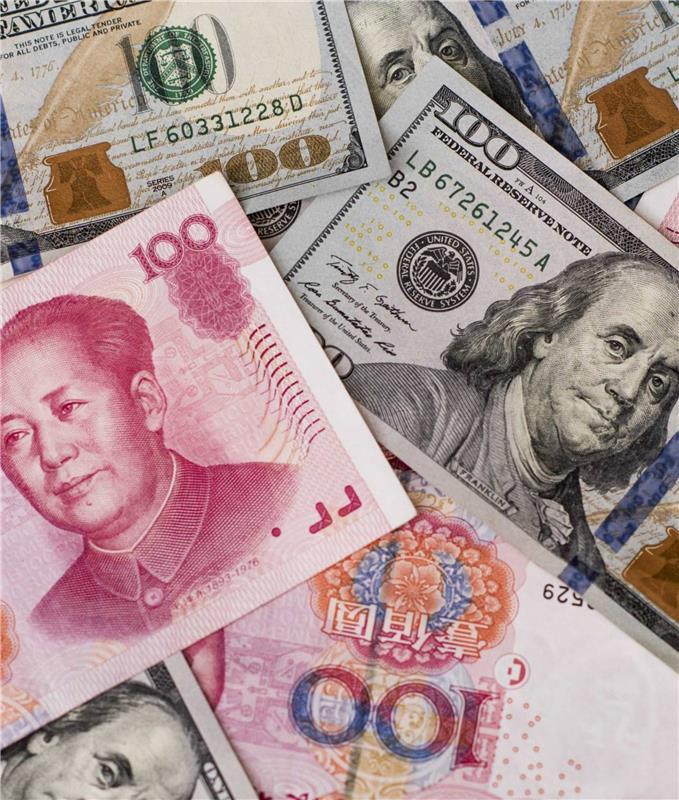How Global Equity Income can help Investors in an Inflationary Environment

Inflation – not just a passing phase
Although July offered a glimmer of hope, it was short lived, with markets tumbling in August. In fact, the month saw the weakest performance in seven years for US stocks. The Dow Jones Industrial Average dropped just over 4%, the tech-rich Nasdaq fell 4.64%, and the S&P 500 slid 4.24%. The ripple effects could be felt across the UK and Europe, which were grappling with their own macro-economic problems. The FTSE All-Share ended the summer with an 1.8% dip, while the EuroStoxx 600 declined over 5%.
The volatility was partly caused by the Federal Reserve chair Jerome Powell indicating that interest rates would continue rising in a bid to tackle soaring inflation. This dashed market hopes that further increases would be more modest.
The nervousness has continued into September and in Europe was fuelled further by its close proximity to Ukraine and reliance on the NordStream Pipeline 1, which has been indefinitely shut off by the Russians unless Western sanctions are lifted. This has sent energy prices soaring by 30% and triggered an aggressive 0.75% interest rate hike from the European Central Bank, which had taken a softer stance than its counterparts. The move though was the first time the euro deposit rate rose above zero in a decade, and 20 years since the region witnessed such a sharp increase.
The latest forecasts show growth could come to a halt in the final quarter of the year. This is evident in the S&P Global’s final composite Purchasing Managers’ Index (PMI), which is seen as a guide to economic health. It fell to an 18-month low of 48.9 in August from July’s 49.9, below a preliminary 49.2 estimate. Anything below 50 indicates contraction. The survey is a signal that the eurozone is entering recession earlier than anticipated, led by its largest economy Germany, which has been the hardest hit by the cut in Russian gas supplies.
The macro-economic picture in the UK looks even dimmer, with the International Monetary Fund reporting it has the worst outlook among the G7 countries. Last month, the Bank of England (BoE) raised interest rates by 50 basis points, its largest single increase since 1995, and its benchmark rate is expected to climb to 2.25% in September. The central bank was bearish, predicting the country to enter a recession in the final quarter of this year. It forecast a GDP contraction of 1.25% in 2023 and 0.25% in 2024, with inflation continuing to be a much bigger long-term threat. It is unlikely that it will
revert back to the hoped-for 2% in the next two years.
Inflation climbed to 10.1% in July from 9.4% in the previous period and slightly above market forecasts of 9.8%. It was the highest reading since February 1982 and BoE expects to reach the 13% mark in October, with some industry experts seeing a rise of between 18% to 20% by next year.
The scenario could change, but the jury is out as to whether the UK’s new prime minister Liz Truss could stem the tide, curtail inflation, and boost productivity and growth. Her energy cap may have an impact, but economists are divided on her £30 billion tax cuts. The Institute of Fiscal Studies said they may generate some extra economic growth “but none of them are even close to paying for themselves.”
Limited choice
Against this backdrop, investment options have narrowed for investors. Fixed income, certain segments of the equity market and real assets are not delivering the strong returns of the past. This is particularly true of growth stocks that have enjoyed one of the longest bull runs. Although there have been periods of rallies, the Nasdaq-100 stock market index, which is weighted toward the tech sector, has lost over 27% of its value in 2022.
In the first five months of the year, the companies known as the FAANGs: Facebook (Meta), Amazon, Apple, Netflix, and Google (Alphabet), plummeted by about 37% on average while firms such as Peloton, Zoom and Netflix, who were the darlings during Covid, also fell from investor grace. The fitness equipment company lost $2.8 billion in the year ended June 30, compared with a $189 million loss in the prior year, while the web-based subscription service saw its shares drop roughly 75% from its record-high in November after losing 200,000 subscribers in its first quarter. The market value of Zoom, the popular virtual conferencing company, dropped to $26 billion, slightly less than its value before the pandemic.
Fixed income also suffered as central banks continued to ramp up interest rates. Gilts, which had been a firm fixture in a portfolio, are now out of favour. The two-year gilt yield, which reflects market expectations for BoE policy, touched 3% in the beginning of September for the first time in 14 years. It jumped 1.2 percentage points in August - the biggest rise since at least 1992, according to Bloomberg data.
The research also showed sterling-denominated investment-grade corporate bonds down almost 12% this year, their worst performance on record, based on ICE BofA indices, while their junk-rated counterparts lost 9.5%, the most since 2008.
As for European bonds, the first-half rout left investors with losses of 13%, by far the worst start to a year on record, and the recent ECB rate increase has only exacerbated the situation. Overall, the Bloomberg Global Aggregate Total Return Index of government and investment-grade corporate bonds has fallen more than 20% from its 2021 peak on an unhedged basis, the biggest drawdown since its inception in 1990.
Equity Income
While there are no panaceas, equity income strategies have weathered the storm better than most other sectors, during this year. They may not be as exciting as growth companies, but can often provide more stable prospects for earnings growth, albeit at more modest levels, which over longer time periods can build up meaningfully. The latest figures from the Investment Association bear this out. They show that as of the end July, year to date, its global equity income fund sector was up 5.2% while UK equity income rose by 2.4%. This is in sharp contrast to global equities which were down 3.1%, UK gilts and corporates, off 14% and 11.5%, respectively, while Europe including the UK equities, recorded a 5.7% drop.
Equity income funds also often comprise a greater proportion of total returns in downturns, when capital returns dominate. Around 40% of S&P 500 Index returns emanated from dividend income over the past 90 years, according to S&P Dow Jones Indices (SPDJI). In periods of low growth this can be even more striking. The 1940s and 1970s, for example, were both periods of sluggish economic growth, rising inflation, and high unemployment. In each decade, dividends accounted for an average of 57% of total returns. Even in the good times, such as the booming 1990s or 2010s, dividends still represented for over 25% of the overall total return.
Another attribute is these companies tend not to excise their dividends in worsening conditions. Since 1940, there have been eight years of dividend cuts during 25 years of earnings declines. In fact, this year, the pay-outs have been increasing. The latest report from funds group Link showed that dividends from UK-listed companies jumped by 38% in the second quarter to £37bn, compared with the year before. The UK as well as Europe were strong drivers of robust global dividends in the same time frame. They reached a record high of $544 billion in the three months ending 30 June, up 11.3% from last quarter, with Europe recording a 28.7% rise, according to the Janus Henderson Global Dividend Index.
Equally as important is that dividends have a good track record of keeping pace with inflation, which is of particular relevance today. This is because income grows in line with or often at a higher rate. In other words, companies that pay a steady and growing dividend often have the potential to grow their cash flow to keep pace with
rising prices.
The dividend universe
As with any investment, selectivity is the key. The past is not always a guide to the future and the best performing dividend stocks today may not necessarily be those of the past. Typically, they are companies which are more established and have steady streams of cash flow. The focus though is not just about the ability to make a payment but also to sustain and grow that dividend. A closer look at the return on capital is a good indication as to whether a company can achieve this goal.
Otis, the lift and escalator manufacturing company, is a case in point. First half results show that it is being impacted less than its competitors in China. Its all-important maintenance revenues are growing at mid-single digits and accelerating, and it is gaining share in new equipment.
Historically, defensive sectors such as consumer staples were the main constituent of equity income funds. This is still the case today, but companies need to have products where the demand is strong despite price increases. This enables margins to be maintained in times of higher inflation, since costs are passed on to the consumer.
Cyclical and high-yield stocks and sectors are off the list as they can perform poorly in market selloffs, and especially in recessionary environments, because they are either more economically sensitive or in tightly regulated industries. Banks, for examples, have seen many instances of dividend payments being curtailed by the regulators.
Conclusion
Looking into next year, the economic outlook is expected to deteriorate especially if the conflict in Ukraine continues. Just as they proved in other low-growth periods, dividends can offer income and capital appreciation, which is why they are expected to be much greater than 2020 or 2021 as a proportion of total return. However, careful due diligence and research is needed when selecting these stocks.
September 2022
IMPORTANT INFORMATION
Issued by Guinness Global Investors. Guinness Global Investors is a trading name
of Guinness Asset Management Limited which is authorised and regulated by the
Financial Conduct Authority (223077).
This document is provided for information only. All the information contained in it is
believed to be reliable but may be inaccurate or incomplete; it should not be relied
upon. It is not an invitation to make an investment nor does it constitute an offer for
sale
Disclaimer: This Insight may provide information about Fund portfolios, including recent activity and performance and may contains facts relating to equity markets and our own interpretation. Any investment decision should take account of the subjectivity of the comments contained in the report. This Insight is provided for information only and all the information contained in it is believed to be reliable but may be inaccurate or incomplete; any opinions stated are honestly held at the time of writing but are not guaranteed. The contents of this Insight should not therefore be relied upon. It should not be taken as a recommendation to make an investment in the Funds or to buy or sell individual securities, nor does it constitute an offer for sale.




